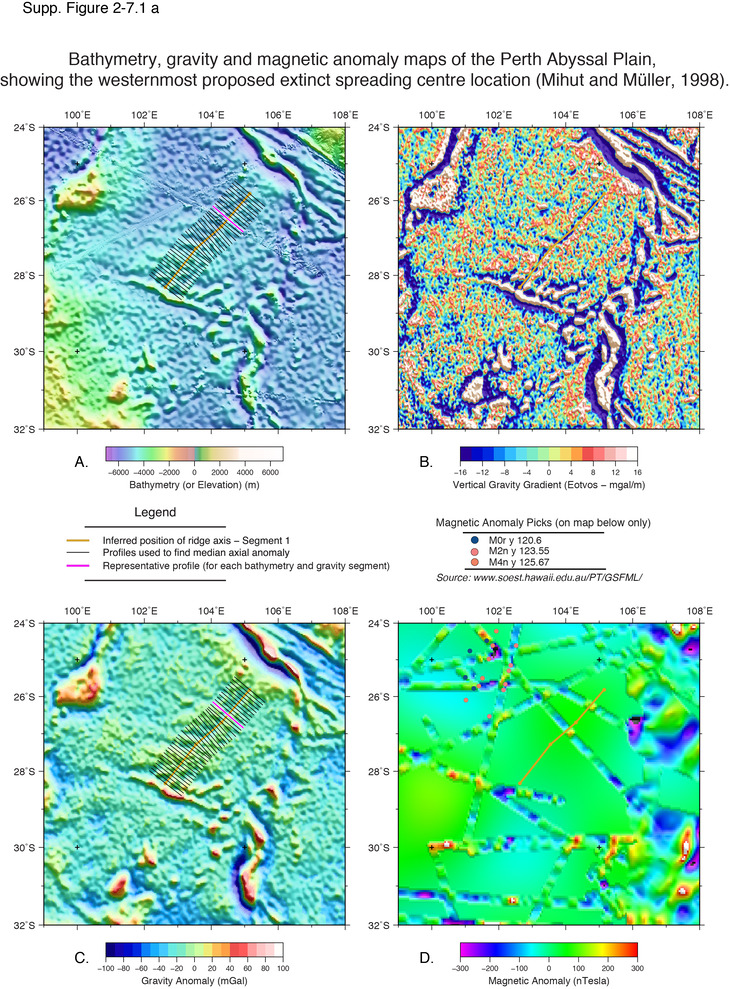The morphology and gravity signature of this proposed extinct ridge is largely symmetric and therefore is more likely to represent an extinct ridge or crustal 'tear' rather than a transform fault that would be expected to have one uplifted flank. Several small scale lineaments are evident to the west of the inferred axis location in the updated vertical gravity maps (B), that have an oblique trend to the feature and are not present to the east of the structure. The elevated ridge that is approximately orthogonal to the ridge axis at the southern extent of the inferred axis, could potentially represent a compressional structure if this structure is an extinct microplate spreading ridge. The peak-to-trough gravity signal and bathymetric relief of the inferred axial segments is relatively close to the mean of the primary tier, well-defined extinct ridges and therefore this ridge can be interpreted as a 'probable' extinct ridge.
Mihut, D. and Müller, R.D., 1998, Volcanic margin formation and Mesozoic rift propagators in the Cuvier Abyssal Plain off Western Australia, Journal of Geophysical Research: Solid Earth, v. 103, no. B11, p.27,135 – 27,149.


